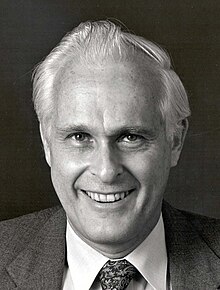
The Universal Product Code is a barcode symbology that is used worldwide for tracking trade items in stores.

A barcode or bar code is a method of representing data in a visual, machine-readable form. Initially, barcodes represented data by varying the widths, spacings and sizes of parallel lines. These barcodes, now commonly referred to as linear or one-dimensional (1D), can be scanned by special optical scanners, called barcode readers, of which there are several types.

Code 39 is a variable length, discrete barcode symbology defined in ISO/IEC 16388:2007.

Code 128 is a high-density linear barcode symbology defined in ISO/IEC 15417:2007. It is used for alphanumeric or numeric-only barcodes. It can encode all 128 characters of ASCII and, by use of an extension symbol (FNC4), the Latin-1 characters defined in ISO/IEC 8859-1. It generally results in more compact barcodes compared to other methods like Code 39, especially when the texts contain mostly digits. Code 128 was developed by the Computer Identics Corporation in 1981.
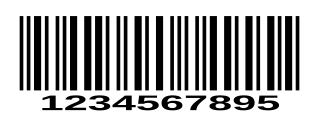
Interleaved 2 of 5 (ITF) is a continuous two-width barcode symbology encoding digits. It is used commercially on 135 film, for ITF-14 barcodes, and on cartons of some products, while the products inside are labeled with UPC or EAN. ITF was created by David Allais, who also invented barcodes Code 39, Code 11, Code 93, and Code 49.

PostBar, also known as CPC 4-State, is the black-ink barcode system used by Canada Post in its automated mail sorting and delivery operations. It is similar to other 4 State barcode systems used by Australia Post and the United Kingdom's Royal Mail, but uses an obscured structure and encoding system unique to Canada Post. This particular bar code system is used on "flats" and parcels.

The International Article Number is a standard describing a barcode symbology and numbering system used in global trade to identify a specific retail product type, in a specific packaging configuration, from a specific manufacturer. The standard has been subsumed in the Global Trade Item Number standard from the GS1 organization; the same numbers can be referred to as GTINs and can be encoded in other barcode symbologies, defined by GS1. EAN barcodes are used worldwide for lookup at retail point of sale, but can also be used as numbers for other purposes such as wholesale ordering or accounting. These barcodes only represent the digits 0–9, unlike some other barcode symbologies which can represent additional characters.
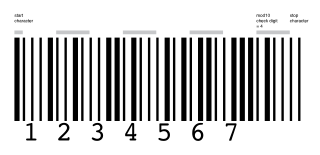
MSI is a barcode symbology developed by the MSI Data Corporation, based on the original Plessey Code symbology. It is a continuous symbology that is not self-checking. MSI is used primarily for inventory control, marking storage containers and shelves in warehouse environments.

The Intelligent Mail Barcode (IMb) is a 65-bar barcode for use on mail in the United States. The term "Intelligent Mail" refers to services offered by the United States Postal Service for domestic mail delivery. The IM barcode is intended to provide greater information and functionality than its predecessors POSTNET and PLANET. An Intelligent Mail barcode has also been referred to as a One Code Solution and a 4-State Customer Barcode, abbreviated 4CB, 4-CB or USPS4CB. The complete specification can be found in USPS Document USPS-B-3200. It effectively incorporates the routing ZIP Code and tracking information included in previously used postal barcode standards.

Code 11 is a barcode symbology developed by Intermec in 1977, and it is used primarily in telecommunications. The symbol can encode any length string consisting of the digits 0–9 and the dash character (-). A twelfth code represents the start/stop character, commonly printed as "*". One or two modulo-11 check digit(s) can be included.
Plessey Code is a 1D linear barcode symbology based on pulse-width modulation, developed in 1971 by The Plessey Company plc, a British-based company. It is one of the first barcode symbology, and is still used rarely in some libraries and for shelf tags in retail stores, in part as a solution to their internal requirement for stock control. The system was first used in the early 1970s by J.Sainsbury to identify all of its products on supermarket shelves for its product restocking system.
PathGuide Technologies is a privately held software company based in Washington State that develops, markets and implements real time warehouse management systems (WMS). It’s largely known as the company that Dr. David Allais, an expert and inventor in the fields of bar coding and automatic identification and data capture (AIDC), founded. PathGuide’s main product, Latitude Warehouse Management System, makes use of bar code scanning and RF data communications. The company integrates its products with Enterprise Resource Planning (ERP) and Automatic Identification and Data Capture companies like Microsoft, Oracle and Intermec. PathGuide primarily markets to wholesale/industrial distributors.
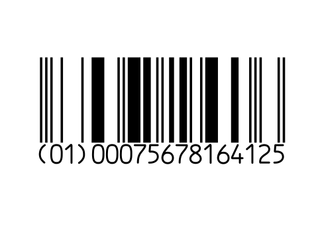
The GS1 Databar Coupon code has been in use in retail industry since the mid-1980s. At first, it was a UPC with system ID 5. Since UPCs cannot hold more than 12 digits, it required another barcode to hold additional information like offer code, expiration date and household ID numbers. Therefore, the code was often extended with an additional UCC/EAN 128 barcode. EAN 13 was sometimes used instead of UPC, and because it starts with 99, it was called the EAN 99 coupon barcode, and subsequently GS1 DataBar. After more than 20 years in use, there is now a need to encode more data for complex coupons, and to accommodate longer company IDs, so the traditional coupon code has become less efficient and sometimes not usable at all.

ITF-6 is the implementation of an Interleaved 2 of 5 (ITF) barcode to encode a addon to ITF-14 and ITF-16 barcodes. Originally was developed as a part of JIS specification for Physical Distribution Center. Instead of ITF-14, it wasn’t standardized by ISO Committee but it is widely used to encode additional data to Global Trade Item Number such as items quantity or container weight.
Barcode library or Barcode SDK is a software library that can be used to add barcode features to desktop, web, mobile or embedded applications. Barcode library presents sets of subroutines or objects which allow to create barcode images and put them on surfaces or recognize machine-encoded text / data from scanned or captured by camera images with embedded barcodes. The library can support two modes: generation and recognition mode, some libraries support barcode reading and writing in the same way, but some libraries support only one mode.
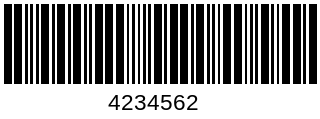
Industrial 2 of 5. is a variable length, discrete, two width symbology. Industrial 2 of 5 is a subset of two-out-of-five codes.

Codablock is a family of stacked 1D barcodes which was invented in Identcode Systeme GmbH in Germany in 1989 by Heinrich Oehlmann. Codablock barcodes are based on stacked Code 39 and Code 128 symbologies and have some advantages of 2D barcodes.

Matrix 2 of 5 is a variable length, discrete, two width symbology. Matrix 2 of 5 is a subset of two-out-of-five codes. Unlike Industrial 2 of 5 code, Matrix 2 of 5 can encode data not only with black bars but with white spaces.
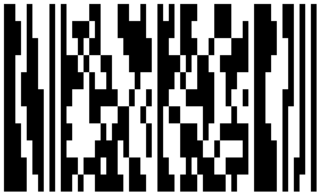
MicroPDF417 is two-dimensional (2D) stacked barcode symbology invented in 1996, by Frederick Schuessler, Kevin Hunter, Sundeep Kumar and Cary Chu from Symbol Technologies company. MicroPDF417 consists from specially encoded Row Address Patterns (RAP) columns and aligned to them Data columns encoded in "417" sequence which was invented in 1990. In 2006, the standard was registered as ISO/IEC 24728:2006.

DotCode is two-dimensional (2D) matrix barcode invented in 2008 by Hand Held Products company to replace outdated Code 128. At this time, it is issued by Association for Automatic Identification and Mobility (AIM) as “ISS DotCode Symbology Specification 4.0”. DotCode consists of sparse black round dots and white spaces on white background. In case of a black background the dots can be white. DotCode was developed to use with high-speed industrial printers where printing accuracy can be low. Because DotCode by the standard does not require complicated elements like continuous lines or special shapes it can be applied with laser engraving or industrial drills.
